There are writers who complain all Hawkman can do is fly. They say that makes him boring.
If you could fly in real life, you would not sulk and ask why all the other kids got better Christmas presents. If you could fly, you would be free of the ground.
Go back to the beginning: Flash Gordon. He started as a newspaper strip and became a movie serial.
In the serial, in one of his battles with Ming, Flash Gordon recruited the Hawkmen led by Prince Vultan. They lived in a city with anti-gravity devices. The Hawkmen had wings but, given special effects limits, these didn’t flap much. Vultan had a helmet with wings on it.
In the Golden Age there were five characters who flew and did little to nothing else. Together they used all the elements of the Hawkmen of Mongo except the multiple wives Vultan had in the newspaper strip.
First came Hawkman in Flash Comics #1 (January, 1940). He was an archaeologist (one of three careers requiring a degree superheroes in the Golden Age have, the others are lawyer and astronomer) who acquires a sword which makes him swoon and remember he used to be a blond Egyptian, Prince Khufu. He and his lover, Chay-Ara, are killed by Hath-Set. (Think the last good version of The Mummy, the middle of the last trilogy.)
They are reincarnated in the twentieth century. The now blond Carter Hall makes a belt of nth metal and a pair of wings. The wings do not flap, they are just to control direction. He puts on a mask with wings. And he calls himself Hawkman. Sound familiar?
Chay-Ara reincarnated as Shiera Sanders. She would become Hawkgirl.
These are the first fliers. It isn’t a power, it’s devices, and basically, it’s stolen from Flash Gordon.
Hawkman I was never really successful. He was a back-up feature. Characters with their own titles were A-list, the next lot were B-list in the Justice Society to try to become popular enough to get their own titles and leave the JSA. Hawkman stayed in the JSA until the end of the Golden Age.
Also in January was the Falcon (Pep Comics #1) who appeared in one 4 page story. He had a short double cape which extended when he was in the air. No explanation was given. Also in 1940 was the Falcon of Radio Fun comics. He started as a detective but eventually put on a costumed suit with bat-like wings that let him fly. These are two nobodies.
Then came the Black Condor in Quality comics. He started in Crack Comics #1 (May 1940). He is the first flier with a natural power. How he got that power because his parents were on an archaeological expedition in Mongolia when they were killed by Outer Mongolian bandits. It happens. He is taken in by a condor who raises him, teaches to understand air currents, body posture, levitation, and flying.
Wait, what? Where did “levitate” come from? Since when did condors know levitation? Never mind.
He kills the bandits because, who needs ‘em? A Christian hermit teaches him the ways of civilization and English, which is what Outer Mongolian Christian hermits do. Then, knowing society only theoretically he puts on a costume and fights organized crime and political corruption.
Black Condor did better than Hawkman. He appeared on front covers of Crack comics usually alternating with the Clock. He was the lead feature from issues #1 to #26 which is the significant point.
Black Condor’s run ended when Quality cut back as the Golden Age ended.
Timely gave us the Red Raven. He is an adopted member of the bird-people have natural wings and live on a city floating in the air above the Atlantic. Sound familiar?
A plane crashes on the island, killing everyone but a boy who is raised by the bird-people. They give him personal anti-gravity devices and wings to steer himself with (sound familiar?) and send him back to the world and into the pages of Red Raven Comics (#1 August 1940) like Black Condor.
He lasted one issue of his own comic.
Timely was more successful with the Angel. He is a non-superpowered detective who first appears in Marvel Comics #1 (Oct 1939). He wears ordinary clothes at first but later wears a blue costume with a yellow belt, wristbands, yellow wings on his chest, and a red cape.
Eventually (post Red Raven) the cape turns out to be the cape of Mercury.
Angel was just below Captain America, the Human Torch, and Namor in popularity. He made over a hundred appearances in the Golden Age.
There was one flier in the Dark Ages (Strange Adventures #56, February 1956). It was a one-shot story of six pages where a biologist treats ants to regrow their wings. One bites him and changes his DNA so he grows falcon wings, spends time discovering he has the eyesight of a hawk, can flies over 180 miles an hour, puts on a yellow body costume, stops an alien invasion and the DNA change wears off (not kidding).
I want to see more of those stories. It’s the only time chemical change is used as the source of the wings. Actual genetic change was used later.
Then in October 1956 came the redesign of the Flash. Where the Golden Age is wrapped in mysticism, the Silver Age has a theme of science. Green Lantern in the Golden Age has a ring made from a talking slightly psychotic meteor that landed in China which flashed once for death, once for life, and once (over and over again) for power. In the Silver Age, Green Lantern is a member of an interplanetary police force.
Instead of a lucky socialite who breathes in hard water vapors, the new Flash is bathed in every chemical known when his shelf is hit with a lightning bolt. The new Flash is a Police Scientist, anticipating CSI units, which didn’t exist in 1956.
Two years after the Flash the next flier came out in Showcase #17 (November 1958). He is Adam Strange, the man with the most used last name among non-relatives in comics (Hugo, Adam, Stephen). He doesn’t have artificial feathered wings and magic nth metal. He has a rocket pack. He is the first flier to ignore an analogy with birds.

Science fiction took over in non super-hero comics, first. So why did they never try to revive the original Starman?
The psychology of the people making comics is a larger part of the story than we tend to believe.
Adam Strange calculates where the zeta beam will hit next, he goes there and gets in its way. The beam teleports him to the planet Rann in the Alpha Centauri system. There he meets his girlfriend, Alanna, has an adventure, and the beam wears off sending him back to earth just before he and Alanna can kiss and do things off panel.
He also has a ray gun, which seems to have no more power than a regular gun.
Adam Strange is a science fiction cliché. He teleports like John Carter of Mars who astrally projects to Mars. He has a rocket pack like Flash Gordon in the newspaper strip. He has a fin on his head which was a trope for science fiction characters for years – look at Starman.
Adam Strange is the first science fiction flier. He has been C list among DC characters, maybe D, but he keeps being used from time to time. However, society and technology have moved forward and Strange has increasingly fallen behind the times except he can fly.
The next flier was a lazy reworking. In 1961 (Brave and Bold #34) Hawkman II and Hawkgirl II were introduced. Instead of Egyptian reincarnations, they are from Thanagar. They have artificial feathered wings and antigravity devices. Instead of Carter Hall and Shiera Sanders, they are Katar Hol and Shayera Thal. Like Flash and Green Lantern, their hair color changes. Blond Hawkman I now has black hair and auburn haired Hawkgirl I now has bright red hair. Hawkgirl II got a gold rather than red top.
They use pre-gunpowder weapons so no one will get their advanced alien ray weaponry. Why they can’t use semiautomatics, I have no idea.

This Hawkgirl punched up (you argue with Wonder Woman, you’re punching up, too) and and she tried to improve her position.
People liked her.
They were slapped-on additions to the growing corpus. He wasn’t put into the JLA right away, he hovered (pun intended) around for a while. His solo series lasted about as long as the original Hawman’s back up series, which makes him more successful.
Again a two-year wait and X-Men #1 (September 1963) introduced the Angel. The new Angel is a rich kid with the wings and hollow bones of a bird. It is the first natural, biological power of flight. He has no levitation or other power.

Several costume changes and a change in groups (X-Men, Champions) didn’t make him interesting.
So they made him metal, gave him new powers, and called him Archangel. Still didn’t work.
The wings operate purely aerodynamically and yet are optimized for both speed and distance. They change shape to match what they’re being used for whenever the artist gets the idea of the different shaped wings birds have. He can also carry his own weight as he flies (his team members).
Another flier is Raven, the THUNDER Agent (1965). He is recruited from outside the agency, thinks of stealing the wings and selling them, but changes his mind when Lightning saves his life. The two form a loose partnership in the series. But Raven’s costume changes every time he appears. From flapping wings to stable ones, metal wings which create a pod which is bulletproof and can smash through walls (etc.). The pod goes but he gets energy claws that can cut through anything or stun people. It was a mess and he was always in the back row because of it.
In Captain America #117 (September 1969) the comic book Falcon debuted. He is the first non-white flier. Initially, though, he just wears a green costume and has a trained falcon, Redwing. Later he gets a red and white costume and wings. He can fly. Originally climbing flag poles to launch himself, his wings eventually have jets and they get larger. Lately his physical profile looks more like Black Condor II and III. He has lasted longer than most fliers but has mainly been part of a team with Captain America or the Avengers.
He’s not A-list, as shown when the Falcon becomes Captain America. It wasn’t the Falcon got a shield, which I would have preferred. Think about the Falcon carrying Cap’s shield in memorium. That could have been good. Better than Cap joining Hydra, at any rate.
The next flier was a long time coming (February 1982, Starslayer #1) and is in the Adam Strange mold. He is the Rocketeer, who came from outside DC/Marvel yet even had a movie. He fights crime in the 1930s wearing a jetpack. In a rare case, the comics weren’t a thirties which just predated the forties: there weren’t Nazi agents everywhere.
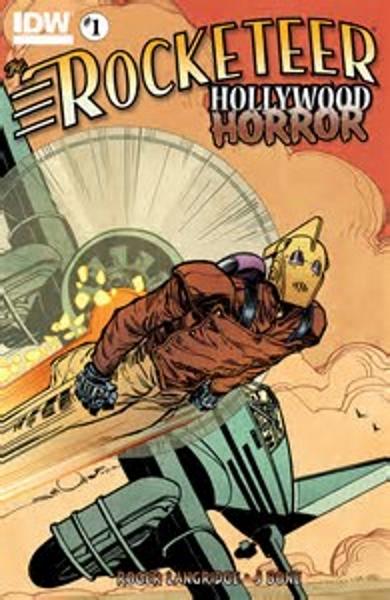
He is the future set in the past. I’m just sorry Dave Stevens died, this could have gone further. The Rocketeer was the best of the fliers.
He had aspirations and was vulnerable.
Those were in the movie, which as usual was a thirties centered on the coming war.
The Rocketeer is a loser fighting high-powered criminal forces partly in order to keep his girlfriend, pin-up girl Betty (based on Bettie Paige).
The character has had a lot of bad luck. Only his creator, Dave Stevens, could really handle the Rocketeer who needs immense background information about LA and New York in the thirties. But Stevens died of cancer and the Rocketeer has never found someone to successfully take up the reins.
The movie cost $35 million and grossed $46 million, when the theater’s cut is taken into account, it got $23 million for the studio. A loss=No sequel.
The Rocketeer is in part an homage to thirties serials. He has a science fiction fin on his helmet which in this case, he uses to assist steering him when flying. He’s interesting when he’s handled well.
After him came two more Black Condors; DC in its legacy phase. These characters made so much money DC tried something else.
Black Condor II (Black Condor #1, June 1992) is genetically modified, giving him wings and telekinesis. He was killed.
Black Condor III (Uncle Sam and the Freedom Fighters #3, Nov 2006) is the second non-white flier of three. He gets his flight power from a Mayan spider goddess, the only flier here to have a divine origin. He can also control winds, which assists him to fly. He stopped appearing with the rest of the Freedom Fighters after eight issues.

There was a lot to this character: devotion to a Goddess, Native American ethnicity, a sense of justice…
Hawkgirl III (August 2012, Earth 2 #2) is a bit different from the previous two. Still a redhead, she has brown skin and the name Kendra Munoz-Saunders. She’s an ex-mercenary and adventurer and associate of the World Army. Think Laura Croft with brown skin and red hair and, suddenly, wings.

The military flier who at least has a gun. But she’s still an archaeologist – the fourth among the fliers.
She is an aggressive, take-charge character who is about as memorable as the series, generally.
Later she is retconned as another reincarnation of Hawkgirl II, who was also Hawkgirl I because she came from Thanagar centuries ago and keeps getting reincarnated throughout the centuries. And to think they did Crisis on Infinite Earths to simplify backstory.
When Earth 2 went, so did the original Kendra.
Image gave us a glider, rather than a flier. Velvet (Velvet #1, October 2013) is a spy. She sometimes puts on a gliding suit, like those used in skydiving, in order to get to high windows or travel quickly in a city (including escape).
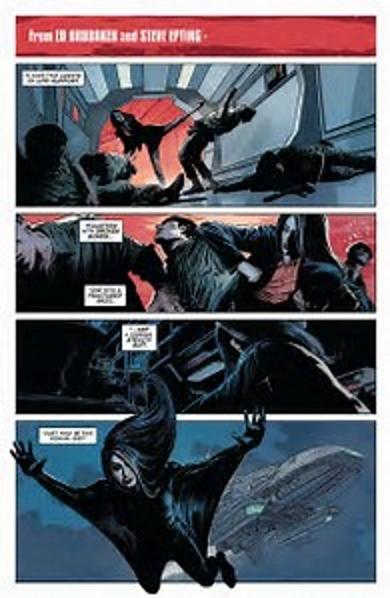
This lady should be on Netflix, broadcast, or a movie.
She cannot fly, only glide, a perfect symbol of the course of the stories.
She is unique among the fliers in that she can’t fly, only glide.
DC has never taken advantage of one possibility for a flier. The Legion travels to the 21st century quite often (is there paperwork for this?). What if one member lost their Legion flight ring? What if someone found it and decided to use it to fight crime, save the world, impress the boy?
But the latest flier came out in March 2014, the Falcon in Captain America: The Winter Soldier. This version is a veteran, which makes him more like Captain America. Less in Winter Solider, more in Civil War, we see just how effective flight all by itself is in a conflict. This guy can fight and that’s not what comes out strongly in most comics. Movie Falcon’s innovation will no doubt filter into the comics.
So, will there be a Falcon movie? No. Fliers can go solo for a short time but they do best in group situations.
The importance of the movie Falcon is not that he can fly, it is that he is seeking better life, working with PTSD vets and standing by Captain America despite the danger. Hawkgirl in the JLA cartoon also seeks improvement including her position. Velvet is trying to keep the world falling into the dark.
Flying is a deep-seated hope in humankind. As such it only really exists in relation to other people. Fliers are a signal to us of one and only one thing: self-improvement. Our analogies for self-improvement imply flying, to do well is to rise, to do really well is to soar. Haunted fliers don’t work. Hawkman and Hawkgirl as a reincarnated cursed couple doesn’t work.
The fliers are should not be dark figures. Batman cannot fly, it won’t sell for long if he does. The same with the Punisher. Fliers have to be seeking the better and they need to be visible.

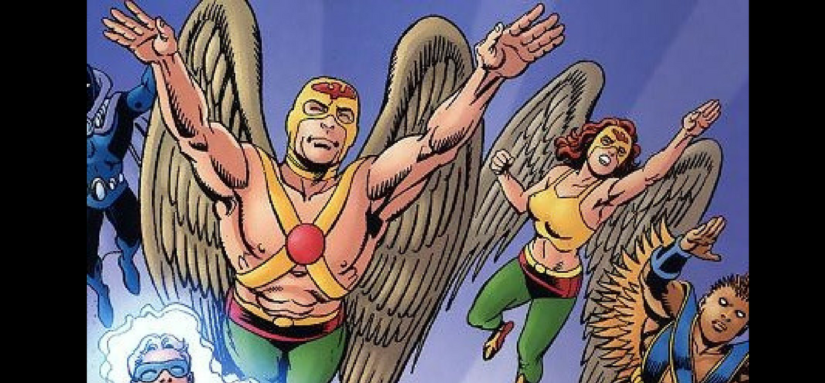






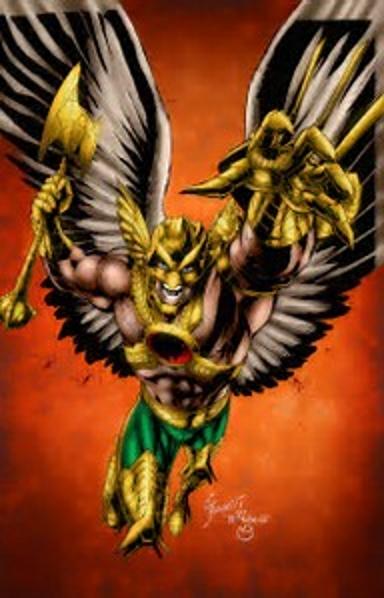



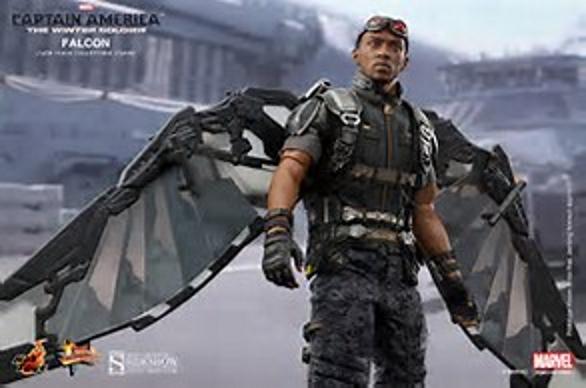
Comments are closed.